
Published on 26-11-2020 by Fakolith Chemical Systems
The global crisis that has produced the Sars-CoV2 that causes the COVID-19 disease, has put again in the limelight one of the biggest threats affecting human health worldwide, zoonoses.
The connection of human health with animal health and the environment is a fact and the One-Health concept is positioned as a necessary global strategy, in which the collaboration of all related activities will be needed; veterinary, biology, medicine, pharmaceuticals, industry and of course, the political class. Next, an approach to the dangers we face and holistic proposals to put in value the Prevention as a fundamental tool.
Do you want to know who we are in 2 minutes? Watch this video
1. THE DANGER OF ZOONOSES
2. THE 'ONE HEALTH' CONCEPT
a) Control of zoonoses.
b) Food safety is a public health priority.
c) Care of the environment.
d) Resistance to antibiotics.
3. FAKOLITH'S HOLISTIC VISION AND TECHNICAL SOLUTIONS
1. THE DANGER OF ZOONOSES
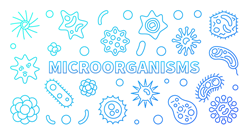 Zoonoses are infectious diseases that are passed from an animal to a human. Zoonotic pathogens can be viruses, bacteria, parasites, fungi, toxins, prions or other non-conventional agents.
Zoonoses are infectious diseases that are passed from an animal to a human. Zoonotic pathogens can be viruses, bacteria, parasites, fungi, toxins, prions or other non-conventional agents.
The transmission is carried out in different ways depending on the type:
· Non-food zoonoses: through the air, by direct contact, by contact with body fluids or by animal vectors such as fleas, lice, mosquitoes, ticks…
· Foodborne zoonoses: transmission comes from contaminated animal processing products, due to improper processing or handling, or from the use of contaminated water.
Scope of zoonoses: According to data from the OIE, (World Organization for Animal Health) 60% of human infectious diseases such as Covid-19, have their origin in an animal, 75% of animal diseases can be transmitted to humans, (currently there are about 200 zoonotic diseases that can be transmitted from animals to humans), 80% of the agents usable in bioterrorism are pathogens of animal origin and about 2.2 million people die each year from zoonoses.
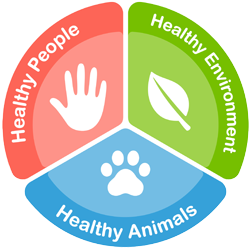 2. THE 'ONE HEALTH' CONCEPT
2. THE 'ONE HEALTH' CONCEPT
The connection of people's health with the health of animals and the environment is a fact.
One Health is a global inter-sectoral strategy for 'One Health'.
The three FAO-OIE-WHO organizations have been working closely together for several years to prevent, detect, control, and eliminate health threats to humans that originate directly or indirectly from animals, and it is an idea for multiple sectors with expertise in different disciplines to collaborate to improve public health and help design strategies, programs, policies and laws to achieve this.
These are the areas of work:
a) Control of zoonoses.
Because animals and people share many of the ecosystems in which we live, it is natural for microorganisms to affect us both equally. Therefore, efforts devoted to animal health have to be the same as those devoted to human health if we are to meet the challenge of controlling zoonoses.
Dr. Tedros WHO Director General: “Any effort in human health is 'doomed' without animal health”.
Dr. Bernard Vallart, Honorary Director General of the OIE states “…we must bear in mind that the fight against zoonoses begins with the elimination of the pathogen at its animal source of infection”. This fact confers an outstanding role, both at national and international level also to the Veterinary Services…
Aligned with WHO's multisectoral approach, it is understood that States should do the same and take advantage of the synergies of clusters of activity to achieve responses to human health hazards and challenges that depend in many ways on animal health and ecosystem health.
“Governments have to be able to unify human and animal health, that is to say, to unify activities such as medicine, veterinary medicine, and also pharmaceuticals and even biologicals in order to face the worrying challenges facing human health today,' as Professor Vicente Calatayud Maldonado says. Therefore, the veterinary activity is a value as necessary as the medical activity, to prevent infectious diseases.
b) Food safety is a public health priority.
The EU Commission, through the 'Farm to Fork' strategy, wants to make the European food system a global leader in sustainability, protecting Food Security and providing all people with safe, healthy, affordable food and reducing the environmental footprint.
This means a change in the way food is produced and distributed throughout Europe through 27 very ambitious objectives, with a legislative framework for a Food System that must be sustainable and safe, which is scheduled for 2023 and is part of the European Green Deal. The Farm to Table strategy is one of the most important pillars of the Covenant, with the aim that in 2050 Europe will be the first continent to achieve a neutral impact on the climate.
As the popular saying goes, 'Prevention is better than cure”. There are various pathogenic microorganisms such as viruses, prions, bacteria, parasites, toxins and transmission of toxic chemicals to food from surfaces that contain them, which are capable of contaminating food in the processing stages and throughout the food value chain, to make them a danger to consumers.
This means that risk management must focus on prevention and not only on corrective measures when the problem has already occurred, so we must introduce the concept of 'preventive risk' in our control of risks and critical points.
Therefore, to ensure safe food, the concept of prevention and action must be applied to the entire chain from the Primary Sector of origin of the food, to all stages of processing, packaging, transport, and distribution, to the final consumer.
Here again, the veterinary activity is that which acts from the production stage on the farm, and in many cases continues throughout the transformation process of the food industry, packaging, including transport, inspection, and distribution of these products to the consumer. Its objective is to maintain the quality and safety of the food we eat and to act as the first barrier to prevent zoonoses, especially in the food sector, where contamination can lead to very serious problems for human health, as well as serious damage in legal problems to the contaminating subject, including some of a criminal nature, as well as economic, image and survival problems in the sector.

The burden of ATS foodborne diseases is considerable according to the WHO Facts and Figures:
Considering these data and the problems that globalization brings with the exchange of food products, there is a risk that contaminated food can be distributed very quickly around the planet. INFOSAN is an international organization created to help member states manage food safety risks and ensure the rapid exchange of information in food emergencies.
c) Care of the environment.
Today, more and more studies show that the environment is involved in the host changes of a pathogen, when it moves between different animal species.
Climate change, together with its consequences in the form of natural disasters, fires, environmental imbalance, or the mobility of people and goods, means that zoonotic diseases that were previously focused on localized areas now have a much wider or global incidence in some cases.
Researchers from the Universities of Swansea(UK) and Queensland(Australia) who have studied how climate change could affect the increase of zoonotic diseases, say that climate factors play a more important role than we thought in the transfer of diseases such as avian flu and many others, between animals and humans.
It is our common responsibility, to preserve the environment within our reach, through responsible growth, shared with nature and, above all, to develop predictive methods for predicting future epidemics and minimizing their effects, because if we stick to what is historical and predictable everything seems to indicate that they will come.
d) Resistance to antibiotics. Improving the prevention of infections.
This resistance refers to the ability of microorganisms to prevent antibiotics from acting against them and is one of the greatest threats to global health. The latest data points to a very high increase in levels of antibiotic resistance worldwide.
This effect has a natural start when bacteria are mutated by the effects of these drugs, but it is the misuse and abuse of antibiotics that accelerates the process of resistance to them in both humans and animals. We leave you the link to the WHO report “Worldwide country situation analysis: response to antimicrobial resistance”.
The result is that many common infections are becoming increasingly difficult or impossible to treat. This increases the risk of infections, surgical operations, hospital stays, etc. and hospital expenses and mortality increase.
There are mainly 3 points of action:
At Fakolith we understand the need for support in new technologies:
Considering the new risks of infections about which we have no experience, the logical thing is to promote in all senses everything that improves the prevention of infections, both in human and animal health.
This requires the use of innovative and complementary options to improve holistic prevention and or vaccination practices, and it is also essential to radically improve hygiene methods, complementing conventional cleaning and disinfection (L&D) measures with innovative preventive technical solutions.
3. FAKOLITH'S HOLISTIC VISION AND TECHNICAL SOLUTIONS
From our point of view in Fakolith, we propose an improvement in the prevention of infections through A LOOK AT HOLISTIC SYSTEMS.
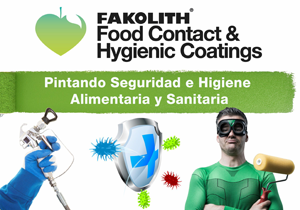 If we look at a challenge such as zoonoses or the concept of 'One Health' tripartite alliance to improve the health of the population, we immediately realize that in general in these systems, there is no single solution to solve the problem but on the contrary, it is formed by a number of improvements where each one of them individually is not the solution, but all of them together, if they provide the best possible solution to this challenge.
If we look at a challenge such as zoonoses or the concept of 'One Health' tripartite alliance to improve the health of the population, we immediately realize that in general in these systems, there is no single solution to solve the problem but on the contrary, it is formed by a number of improvements where each one of them individually is not the solution, but all of them together, if they provide the best possible solution to this challenge.
Fakolith with this criterion has developed for 60 years, innovative technologies to enhance prevention throughout the food value chain and improve Food and Health Safety, considering sustainability and ecology.
These technologies help to enhance Food Safety in two important aspects:
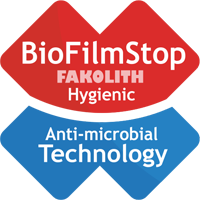
 · Reduce the load of microorganisms in the entire food chain,
· Reduce the load of microorganisms in the entire food chain,
with BioFilmStop technology.
· Preventing the transmission of toxic chemicals from surfaces to food, with FoodGrade Technology.
The criterion we have used has been to think that surfaces, both open and otherwise, are potential vectors of microbiological and chemical contamination: walls, ceilings, floors, installations, machines, structures, ducts, transformation, transport elements, etc. These surfaces represent more than 90% of the entire value chain, therefore if we apply these technologies in the form of coatings, paint, varnish ..., we will transform these surfaces that are potentially vectors of transmission of infections, in additional protection shields against microorganisms and toxic chemicals, providing a new barrier in the current holistic system, which will improve Food and Health Safety from the primary sector, to the processing, transport, distribution and to the final consumer.

 In addition, the concept of surface coatings with our BioFilmStop and FoodGrade technologies, as a complement to L+D, are an efficient, safe, and effective method to help prevent infections. It is a sustainable improvement because once applied, it does not consume additional energy or water, nor does it generate constant waste to be recycled, nor does it affect production delays, and there are no failures due to 'human error' as often happens with 'kill time' or dosage, etc...
In addition, the concept of surface coatings with our BioFilmStop and FoodGrade technologies, as a complement to L+D, are an efficient, safe, and effective method to help prevent infections. It is a sustainable improvement because once applied, it does not consume additional energy or water, nor does it generate constant waste to be recycled, nor does it affect production delays, and there are no failures due to 'human error' as often happens with 'kill time' or dosage, etc...
 In short, since it can be applied to many sq m2 of multiple surfaces, it is positioned as the most economical complementary procedure possible, since beyond its primary function determined by the type of coating, paint or varnish, its complementary broad-spectrum antimicrobial effectiveness lasts days, weeks, months, and years. Food and health safety can be also painted.
In short, since it can be applied to many sq m2 of multiple surfaces, it is positioned as the most economical complementary procedure possible, since beyond its primary function determined by the type of coating, paint or varnish, its complementary broad-spectrum antimicrobial effectiveness lasts days, weeks, months, and years. Food and health safety can be also painted.
These technologies, and others that are complementary, add a further step in the multi-barrier effect, to achieve the objectives of the EU 'Farm to Fork' strategy.
 Fakolith, thanks to its constant participation in official R+D+i projects, related to food contact and microbiology in surface technologies for hygienic and food contact coatings, has a test plan that allows it to evaluate, among other aspects, a wide spectrum of pathogenic microorganisms, to obtain comparative data with various standards, to compare real and non-ideal laboratory situations with the real experience of more than 55 years, to verify their effectiveness on surfaces after cleaning and disinfection, and all this in various types of coatings, differentiated by their primary function, although all treated with BioFilmStop technologies. This is an ever-evolving range of coatings, which is growing and enriching in parallel with the research that is optimizing the BioFilmStop and FoodGrade technologies.
Fakolith, thanks to its constant participation in official R+D+i projects, related to food contact and microbiology in surface technologies for hygienic and food contact coatings, has a test plan that allows it to evaluate, among other aspects, a wide spectrum of pathogenic microorganisms, to obtain comparative data with various standards, to compare real and non-ideal laboratory situations with the real experience of more than 55 years, to verify their effectiveness on surfaces after cleaning and disinfection, and all this in various types of coatings, differentiated by their primary function, although all treated with BioFilmStop technologies. This is an ever-evolving range of coatings, which is growing and enriching in parallel with the research that is optimizing the BioFilmStop and FoodGrade technologies.
Just by looking up we see that we are surrounded by surfaces with coatings, paints and varnishes. Especially in high-stress sectors, such as the food industry and those related to health protection such as hospitals, clinics, the pharmaceutical industry, cosmetics, etc., numerous certifications and excellent technical properties are demanded to paints and coatings. Therefore, the primary functions of our hygienic and food contact coatings cover high certified technical requirements such as:
It would be of little use to certify a coating with high antimicrobial properties or the absence of toxic migrations if it is not prepared to resist and endure adequately under technical and industrial use conditions. If the paint matrix fails in its real use, the rest fails, even though tests in laboratory conditions may indicate otherwise.
However, if we comply with all the above, we add a barrier effect against pathogenic microorganisms, we will be improving very significantly the prevention and hygienic maintenance of surfaces, by transforming surfaces that can be vectors of infection, in additional protection shields. If the surfaces are more hygienic, so are the environments and their surroundings, by reducing cross-contamination.
 In no case do we consider that the use of Fakolith Hygienic or Food Contact coatings excludes the need to carry out cleaning and disinfection processes against fungi, viruses and bacteria, whether in the food industry, the sanitary sector or other public, private spaces, as well as in the home. However, we can say that we will greatly improve overall safety and hygiene, which as a whole depends on holistic measures. On the part of Fakolith we would like to highlight:
In no case do we consider that the use of Fakolith Hygienic or Food Contact coatings excludes the need to carry out cleaning and disinfection processes against fungi, viruses and bacteria, whether in the food industry, the sanitary sector or other public, private spaces, as well as in the home. However, we can say that we will greatly improve overall safety and hygiene, which as a whole depends on holistic measures. On the part of Fakolith we would like to highlight:
1. Choosing the right registered disinfectant, such as BioFilmStop Cleaner, as well as always trying to optimize the application method and equipment, improve training, protocols and post L+D control.
2. Additional prevention of multiple surfaces of walls, ceilings, floors, equipment, etc. painted with Fakolith Hygienic or Food Contact Coatings, treated with BioFilmStop technologies.
3. Always follow official health recommendations (social distance, proper use of mask and other individual and collective protective equipment, proper washing and disinfection of hands and surfaces, etc.)
The FAKOLITH coatings that have already been offering for many years broad spectrum antimicrobial protection (including Coronavirus), as treated articles, are:
Hygienic range, treated with BioFilmStop antimicribial technology. (against molds, bacteria, biofilm, Coronavirus)
 Disperlith Industry
Disperlith IndustryFoodGrade range, treated with BioFilmStop FG antimicrobial technology, suitable for food contact
(against bacteria, biofilm, Coronavirus)

 DISPERLITH FoodGrade Elastic
DISPERLITH FoodGrade Elastic
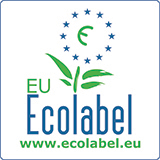 ECOLABEL range, treated with BioFilmStop, Ecolabel
ECOLABEL range, treated with BioFilmStop, Ecolabel
(against bacteria, biofilm, Coronavirus)
We will continue to inform you of our news and specific solutions for the various sub-sectors of the food and health chain, through our blog and newsletter on our website www.foodgradepaint.com
Links of interest:
Certified Food Contact and Hygienic paints
Download this post in PDF